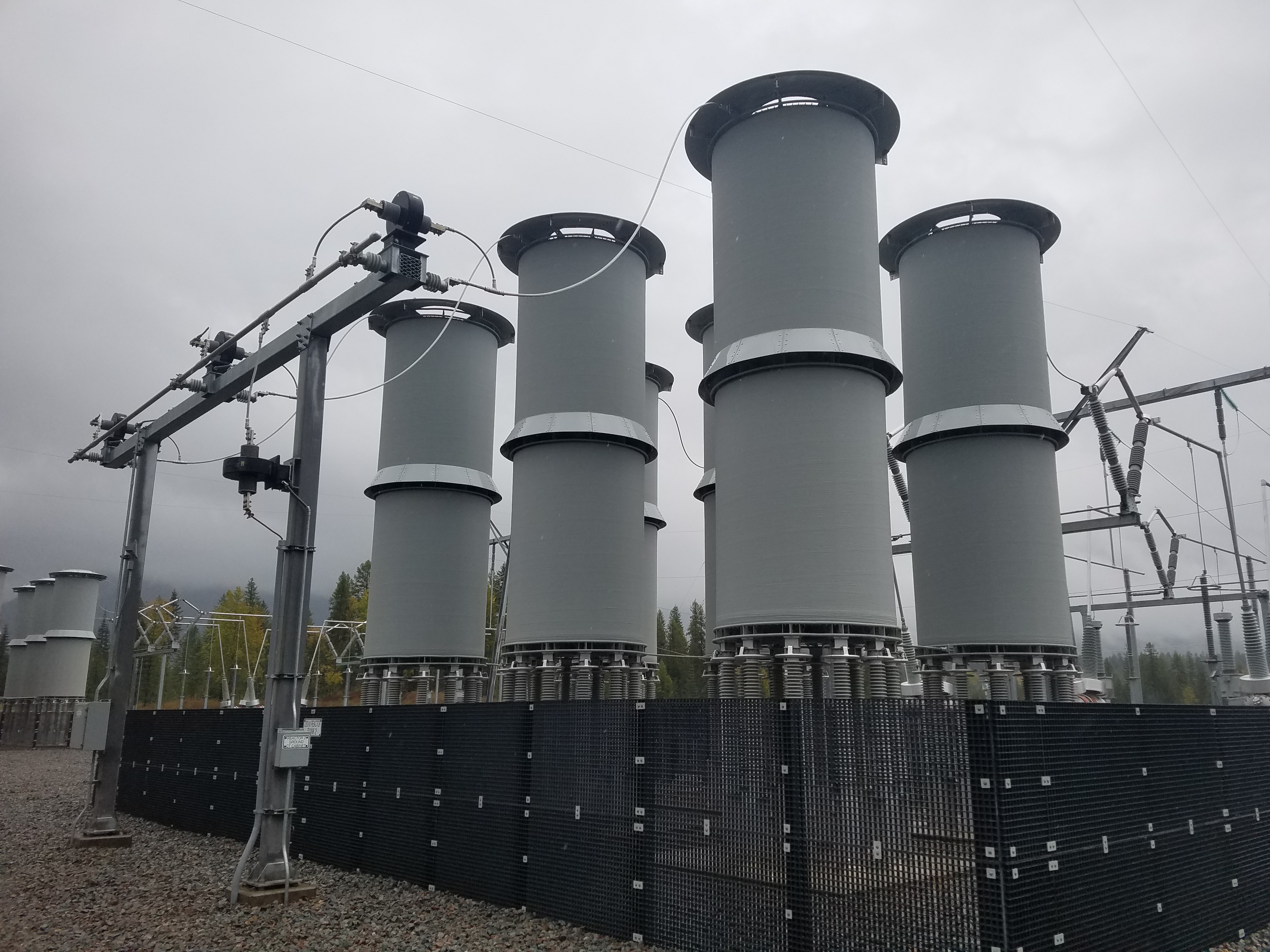Line reactor on:
[Wikipedia]
[Google]
[Amazon]
In electrical engineering, current limiting reactors can reduce 
 The main motive of using current limiting reactors is to reduce short-circuit currents so that circuit breakers with lower short circuit breaking capacity can be used. They can also be used to protect other system components from high current levels and to limit the inrush current when starting a large motor.
The main motive of using current limiting reactors is to reduce short-circuit currents so that circuit breakers with lower short circuit breaking capacity can be used. They can also be used to protect other system components from high current levels and to limit the inrush current when starting a large motor.
short-circuit
A short circuit (sometimes abbreviated to short or s/c) is an electrical circuit that allows a current to travel along an unintended path with no or very low electrical impedance. This results in an excessive current flowing through the circuit. ...
current
Currents, Current or The Current may refer to:
Science and technology
* Current (fluid), the flow of a liquid or a gas
** Air current, a flow of air
** Ocean current, a current in the ocean
*** Rip current, a kind of water current
** Current (stre ...
s, which result from plant expansions and power source additions, to levels that can be adequately handled by existing distribution equipment.
They can also be used in high voltage electric power transmission grids for a similar purpose. In the control of electric motors, current limiting reactors can be used to restrict starting current or as part of a speed control system.

History
Current limiting reactors, once called current limiting reactance coils, were first presented in 1915. The inventor of the current limiting reactance coil was Vern E. Alden who filed the patent on November 20, 1917 with an issue date of September 11, 1923. The original assignee wasWestinghouse Electric & Manufacturing Company
The Westinghouse Electric Corporation was an American manufacturing company founded in 1886 by George Westinghouse. It was originally named "Westinghouse Electric & Manufacturing Company" and was renamed "Westinghouse Electric Corporation" in ...
.
Operation
A current limiting reactor is used when theprospective short-circuit current
The prospective short-circuit current (PSCC), available fault current, or short-circuit making current is the highest electric current which can exist in a particular electrical system under short-circuit conditions. It is determined by the volta ...
in a distribution or transmission system is calculated to exceed the interrupting rating of the associated switchgear
In an electric power system, a switchgear is composed of electrical disconnect switches, fuses or circuit breakers used to control, protect and isolate electrical equipment. Switchgear is used both to de-energize equipment to allow work to be ...
. The inductive reactance is chosen to be low enough for an acceptable voltage drop during normal operation, but high enough to restrict a short circuit to the rating of the switchgear.
The amount of protection that a current limiting reactor offers depends upon the percentage increase in impedance that it provides for the system.
 The main motive of using current limiting reactors is to reduce short-circuit currents so that circuit breakers with lower short circuit breaking capacity can be used. They can also be used to protect other system components from high current levels and to limit the inrush current when starting a large motor.
The main motive of using current limiting reactors is to reduce short-circuit currents so that circuit breakers with lower short circuit breaking capacity can be used. They can also be used to protect other system components from high current levels and to limit the inrush current when starting a large motor.
Construction
It is desirable that the reactor does not go into magnetic saturation during a short circuit, so generally an air-core coil is used. At low and medium voltages, air-insulated coils are practical; for high transmission voltages, the coils may be immersed intransformer oil Transformer oil or insulating oil is an oil that is stable at high temperatures and has excellent electrical insulating properties. It is used in oil-filled transformers (wet transformers), some types of high-voltage capacitors, fluorescent lamp b ...
.
Installation of air-core coils requires consideration of the magnetic field produced by the coils, which may induce current in large nearby metal objects. This may result in objectionable temperature rise and waste of energy.
Line reactor
A line reactor is an inductor wired between a power source and a load. In addition to the current limiting function, the device serves to filter out spikes of current and may also reduce injection of harmonic currents into the power supply. The most common type is designed forthree-phase electric power
Three-phase electric power (abbreviated 3φ) is a common type of alternating current used in electricity generation, transmission, and distribution. It is a type of polyphase system employing three wires (or four including an optional neutral ...
, in which three isolated inductors are each wired in series with one of the three line phases. Line reactors are generally installed in motor driven equipment to limit starting current, and may be used to protect Variable-frequency drive
A variable-frequency drive (VFD) is a type of motor drive used in electro-mechanical drive systems to control AC motor speed and torque by varying motor input frequency and, depending on topology, to control associated voltage or current va ...
s and motors.: )
See also
*Electrical ballast
An electrical ballast is a device placed in series with a load to limit the amount of current in an electrical circuit.
A familiar and widely used example is the inductive ballast used in fluorescent lamps to limit the current through the tub ...
References
{{reflist Electrical engineering Electric power transmission American inventions Over-current protection devices